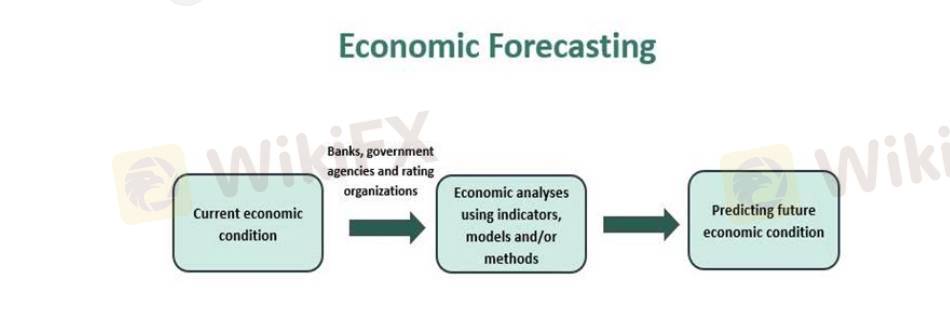
2025-02-13 17:56
IndustryEconomic Forecasting: Methods, Challenges, and App
#Firstdealofthenewyearastylz
Economic Forecasting: Methods, Challenges, and Applications
1. Introduction to Economic Forecasting
Economic forecasting involves predicting future economic conditions based on the analysis of historical data and current economic trends. These predictions help governments, businesses, and investors make informed decisions.
2. Methods of Economic Forecasting
There are several methods used in economic forecasting, including:
a. Qualitative Methods
Expert Opinion: Involves gathering insights from economists and industry experts.
Delphi Method: A structured communication technique where experts provide forecasts independently, and results are aggregated.
b. Quantitative Methods
Time Series Analysis: Utilizes historical data to identify trends, cycles, and seasonal patterns.
Examples: Moving Averages, ARIMA (Auto-Regressive Integrated Moving Average) models.
Econometric Models: These models use mathematical equations to describe economic relationships.
Examples: Linear regression models, Vector Autoregression (VAR).
Leading Indicators: Analyzes variables that tend to change before the economy as a whole, such as stock market performance, manufacturing orders, and housing starts.
c. Machine Learning and AI-Based Methods
Neural Networks and Deep Learning: These models learn complex patterns in large datasets.
Random Forests and Support Vector Machines (SVMs): Used for non-linear and complex data relationships.
3. Challenges in Economic Forecasting
Data Limitations: Incomplete or inaccurate historical data can lead to incorrect forecasts.
Complex Economic Dynamics: Economic systems are influenced by numerous variables, including political events and natural disasters.
Model Uncertainty: Different models can produce different forecasts, leading to uncertainty.
Behavioral and Structural Changes: Changes in consumer behavior or economic policy can render historical data less relevant.
External Shocks: Unpredictable events such as pandemics, geopolitical tensions, or financial crises disrupt economic patterns.
4. Applications of Economic Forecasting
Government Policy Making: Used to formulate fiscal and monetary policies, including setting interest rates and budget allocations.
Business Strategy and Planning: Helps companies in demand forecasting, inventory management, and investment decisions.
Financial Markets: Assists investors in asset allocation, risk management, and predicting stock market trends.
International Trade and Investment: Forecasts exchange rates, inflation, and global economic conditions to guide trade agreements and investments.
5. Conclusion
Economic forecasting is a crucial tool for decision-making across various sectors. However, the accuracy and reliability of forecasts depend on the methods used, data quality, and the ability to adapt to changing economic dynamics. Continuous advancements in machine learning and data analytics are improving forecasting models, but challenges like uncertainty and external shocks remain significant obstacles.
Like 0

FX2804747192
Brokers
Hot content
Industry
Event-A comment a day,Keep rewards worthy up to$27
Industry
Nigeria Event Giveaway-Win₦5000 Mobilephone Credit
Industry
Nigeria Event Giveaway-Win ₦2500 MobilePhoneCredit
Industry
South Africa Event-Come&Win 240ZAR Phone Credit
Industry
Nigeria Event-Discuss Forex&Win2500NGN PhoneCredit
Industry
[Nigeria Event]Discuss&win 2500 Naira Phone Credit
Forum category

Platform

Exhibition

Agent

Recruitment

EA

Industry

Market

Index
Economic Forecasting: Methods, Challenges, and App
 Hong Kong | 2025-02-13 17:56
Hong Kong | 2025-02-13 17:56#Firstdealofthenewyearastylz
Economic Forecasting: Methods, Challenges, and Applications
1. Introduction to Economic Forecasting
Economic forecasting involves predicting future economic conditions based on the analysis of historical data and current economic trends. These predictions help governments, businesses, and investors make informed decisions.
2. Methods of Economic Forecasting
There are several methods used in economic forecasting, including:
a. Qualitative Methods
Expert Opinion: Involves gathering insights from economists and industry experts.
Delphi Method: A structured communication technique where experts provide forecasts independently, and results are aggregated.
b. Quantitative Methods
Time Series Analysis: Utilizes historical data to identify trends, cycles, and seasonal patterns.
Examples: Moving Averages, ARIMA (Auto-Regressive Integrated Moving Average) models.
Econometric Models: These models use mathematical equations to describe economic relationships.
Examples: Linear regression models, Vector Autoregression (VAR).
Leading Indicators: Analyzes variables that tend to change before the economy as a whole, such as stock market performance, manufacturing orders, and housing starts.
c. Machine Learning and AI-Based Methods
Neural Networks and Deep Learning: These models learn complex patterns in large datasets.
Random Forests and Support Vector Machines (SVMs): Used for non-linear and complex data relationships.
3. Challenges in Economic Forecasting
Data Limitations: Incomplete or inaccurate historical data can lead to incorrect forecasts.
Complex Economic Dynamics: Economic systems are influenced by numerous variables, including political events and natural disasters.
Model Uncertainty: Different models can produce different forecasts, leading to uncertainty.
Behavioral and Structural Changes: Changes in consumer behavior or economic policy can render historical data less relevant.
External Shocks: Unpredictable events such as pandemics, geopolitical tensions, or financial crises disrupt economic patterns.
4. Applications of Economic Forecasting
Government Policy Making: Used to formulate fiscal and monetary policies, including setting interest rates and budget allocations.
Business Strategy and Planning: Helps companies in demand forecasting, inventory management, and investment decisions.
Financial Markets: Assists investors in asset allocation, risk management, and predicting stock market trends.
International Trade and Investment: Forecasts exchange rates, inflation, and global economic conditions to guide trade agreements and investments.
5. Conclusion
Economic forecasting is a crucial tool for decision-making across various sectors. However, the accuracy and reliability of forecasts depend on the methods used, data quality, and the ability to adapt to changing economic dynamics. Continuous advancements in machine learning and data analytics are improving forecasting models, but challenges like uncertainty and external shocks remain significant obstacles.
Like 0
I want to comment, too
Submit
0Comments

There is no comment yet. Make the first one.

Submit
There is no comment yet. Make the first one.